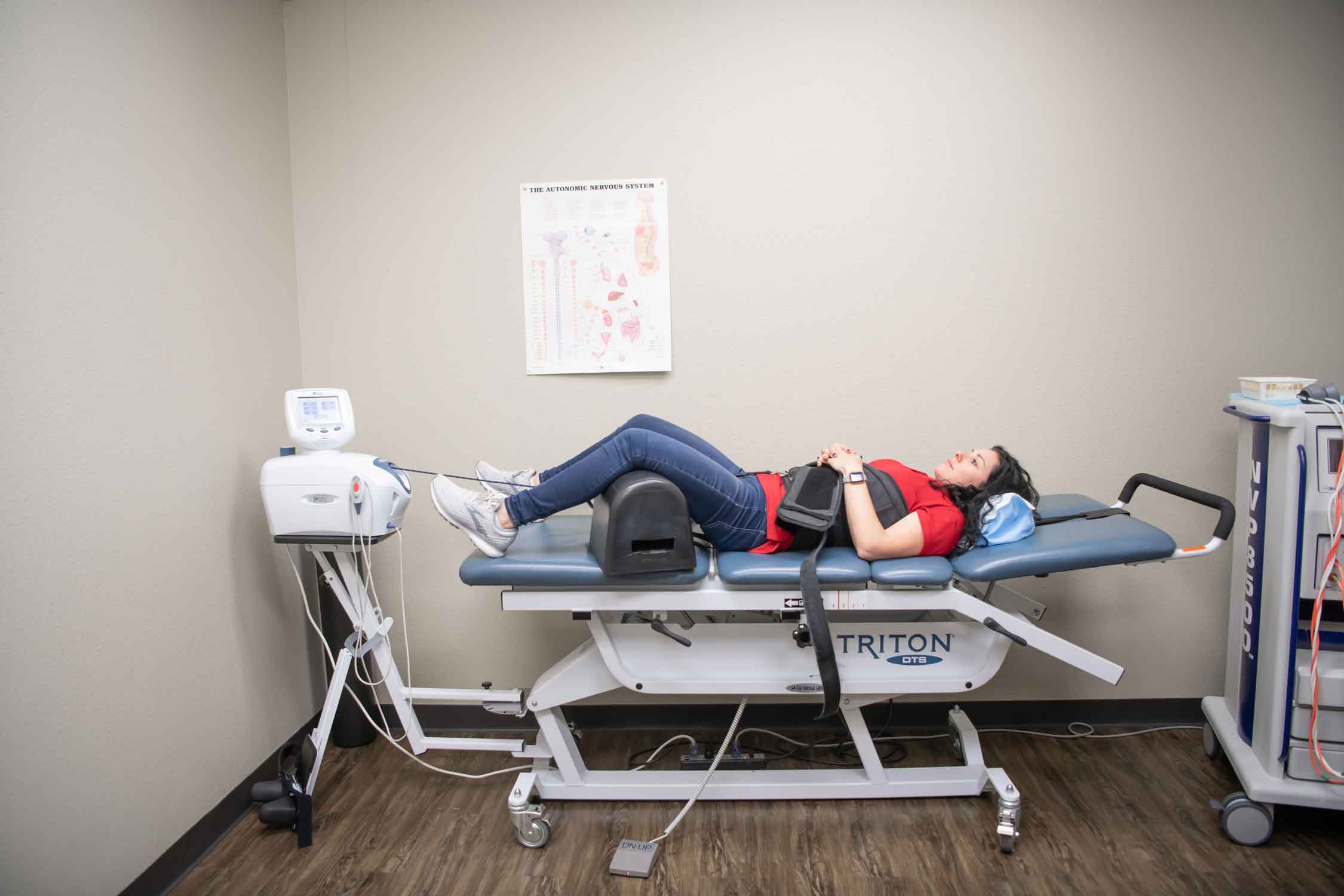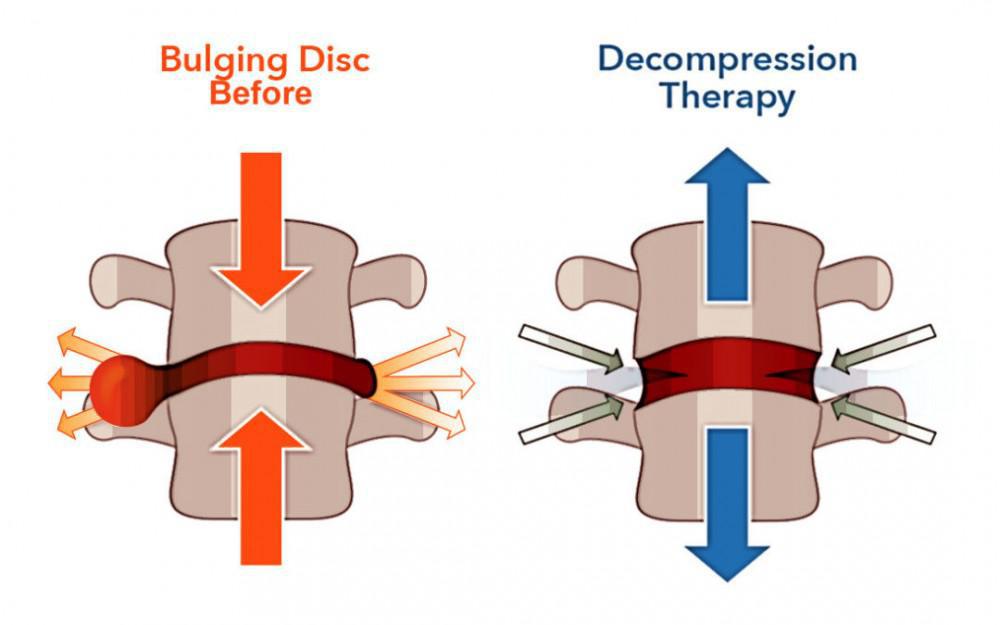23 Nov 2022 | Jennifer
Is it good to decompress the spine?
Different forms of treatment that relieve back pain by relieving pressure on the neurological components of your spine are referred to as spinal decompression.
Your spine consists of vertebrae with ligaments and spinal disks. Along the center of these bones, ligaments, and disks, your spinal column acts as a neural pathway. Injuries and wear and tear (degeneration) can cause spinal pain. You may feel pain due to compression in your spine that puts pressure on the spinal cord. Spinal decompression aims to reduce pressure to lessen discomfort.
Many options are there to relieve back pain - medicines, therapies, and surgical options that can reduce your pain. Don’t delay, contact Dallas Back Clinics at 469-833-2927.
What health issues may spinal decompression help with?
- Bulging disks
- Degenerative disks
- Herniated disks
- Pinched nerves
- Sciatica
- Spinal stenosis
Types of spinal decompression therapies
Acute back pain gets better on its own. Pain relievers and hot and cold packs can help alleviate pain. For chronic pain, non-invasive therapies are there. Your healthcare professional might suggest surgery if home care is ineffective.

What is non surgical spinal decompression?
Non-Surgical Spinal Decompression :- Motorized traction such as non-surgical spinal decompression may help with back pain relief. Spinal decompression gently stretches the spine which affects the spine's force and position. This alteration relieves pressure on the spinal disks by creating negative pressure in the disk. As a result, herniated or bulging disks may retract, relieving pressure on the spine's nerves and other components. This in turn encourages the flow of fluids that are rich in nutrients, oxygen, and water into the disks to help in their healing.
Non-surgical treatment treats the following conditions :-
- Sciatica or back or neck pain
- Herniated or bulging disks
- Posterior facet syndrome
- Injured spinal nerve roots
How is non-surgical spinal decompression performed?
A harness is wrapped around your pelvis and another is placed around your trunk by the doctor. You may lay on a computer-controlled table face up or face down. A doctor uses the computer to customize the treatment to your unique needs. Treatment can last 30 to 45 minutes. Over the course of five to seven weeks, you might need 20 to 28 treatments. Other types of treatment you may need before or after therapy :-
- Electrical stimulation :- Some muscles contract as a result of an electric current being used.
- Ultrasound :- Sound waves are used to generate heat.
- Heat or cold therapy.
Who should not have nonsurgical spinal decompression?
Avoid nonsurgical decompression if you are pregnant or have the following conditions :-
- Fracture
- Tumor
- Advanced osteoporosis
- Metal implants in the spine
- Abdominal aortic aneurysm

What is surgical spinal decompression?
Surgical Spinal Decompression is the last option to treat certain types of back pain. Your doctor may advise surgical spinal decompression if other treatments are ineffective for bulging or ruptured disks, bony growths, or other spinal issues. The following signs of pressure on the spinal cord or nerves may be relieved through surgery: Pain, numbness, tingling, and weakness.
Different types of spinal decompression surgeries :-
Doctors may suggest different types of surgeries for the spine. To stabilize the spine, you may also need spinal fusion. Common back surgeries are :-
- Diskectomy :- A part of the disk is taken out during this treatment to release pressure on the nerves.
- Laminotomy or laminectomy :- To widen the spinal canal and relieve pressure, a surgeon removes a tiny amount of bone, either a piece of the bony arch or the entire bony arch.
- Osteophyte removal :- Bony growths are removed in this surgery.
- Foraminotomy or foraminectomy :- To widen the apertures for the nerve roots, a surgeon removes bone and other tissue.
- Corpectomy :- During this treatment, a vertebral body and the disks between the vertebrae are removed.
How to choose a spinal decompression procedure?
Based on your overall health history and the seriousness of your injuries, your healthcare practitioner will offer a recommendation. They always start with less invasive procedures, then proceed to the next level which may include surgery.
What are the benefits of spinal decompression?
- Eases back pain
- Reduced nerve pressure
- Retract herniated disks
- Relief from spinal chronic pain
- Improved posture
Risks of spinal decompression
Spinal decompression is generally quite safe and offers immediate, long-lasting pain relief, but it isn't appropriate for everyone. Common risks associated with spinal decompression are bleeding, infections, blood clots, and nerve or tissue damage. The possibility that surgery won't significantly reduce back pain is another risk.
What is the success rate of spinal decompression?
Surgical procedures can have a high success rate at alleviating pain. Not all degenerative conditions will respond to surgery.
People who underwent surgery showed more improvement than those who received nonsurgical therapies in clinical studies for spinal stenosis.
Considerations to Make Before Selecting Spinal Decompression
Inform your healthcare provider if you had back surgery in the past or implants in your body. Spinal decompression therapy may also be contraindicated in patients with tumors, vertebral fractures, or a history of aneurysms.
Spinal decompression surgery is generally safe but may cause side effects in some patients. By providing precise information about your present health and treatment plans, you can help avoid severe negative effects.

 Telehealth Visits Available
Telehealth Visits Available
